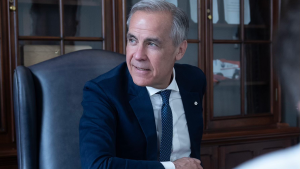The U.S.-based Brookings Institution has established a new infrastructure planning and spending tool aimed at enhancing the place-making framework for spending decisions.
Recently, the think-tank issued a report titled Aligning Investment and Values: How an Economic Value Atlas Can Map Regional Strategies, and a day it later hosted a webinar to offer insights into the strategy.
As explained by Brookings Metro senior fellow Adie Tomer, host of the webinar, the report stems from the realization that the massive injection of infrastructure spending on its way from the Joe Biden administration should be filtered through regional lenses.
The Economic Value Atlas (EVA) process implemented in three participating urban centres, Kansas City, Minneapolis-Saint Paul and Portland, created new organizational strategies for regional investment decision-making.
American communities are dealing with a host of long-term structural conditions as they attempt to boost their economic competitiveness both globally and domestically, Tomer explained, and on top of that, inflation, supply chain problems and other market volatilities have only added to the complexity of the issues they face.
“Now, while those economic conditions are often framed through a national lens, and for really good reasons, each one of them actually touches every single city, town and metropolitan area in different ways,” said Tomer. “We know that places don’t have the same starting points, whether it comes to their industries, their collective expertise across their labour force, or the natural environment where they’re situated.”
The EVA process offers metropolitan leaders guidance in managing the structural conditions to better sync place-based investments with long-term economic goals, he said.
“Simply put, we often make fixed investments in neighbourhoods that can work at odds with our long-range, regional goals,” said Tomer.
U.S. Assistant Secretary of Commerce for Economic Development Alejandra Castillo joined the webinar to offer support for the place-based approach.
“No two regions are alike and it is poor use of federal resources to assume the federal agencies have all the information needed to dictate what industries and capacities should be invested in these regional levels,” said Castillo. “Therefore our place-based approach provides resources for communities to engage in a thoughtful analysis of their own economic development and growth assets.”
The EVA framework involves creating a broad-based leadership team that “sets a stakeholder table with a diverse collection of regional voices”; establishing a research team; setting up a coding and software team that will benchmark neighbourhood performance relative to regional goals; and embarking on a process through which the leadership team works with government and civic leaders to guide policy and investment decisions using EVA outputs.
During the 18 months the EVA program was set up, Portland’s EVA helped create an Equitable Development Index, which advised on a future light rail investment and a region-wide ballot initiative.
In Kansas City, regional planners are using an EVA to enhance a competitive grant program.
Panellist Elissa Gertler, director of planning and development for Oregon Metro, noted the Portland region has a long history of collaboration among stakeholders to address complex challenges, and that tradition will be relied on to take advantage of today’s emerging opportunities given that they are “not something any of us can do alone.”
Local sectors that will benefit from federal Economic Development Administration support are Portland’s historic black neighbourhood and the mass timber manufacturing sector.
The Black community has “suffered more gentrification, displacement and environmental injustice than anywhere else in our region,” said Gertler, and federal support will be directed to community-driven public investment models.
Kansas City offers investors low costs, said Sheri Gonzales, director of KC Rising, but when the city is compared to others of similar size it is often outpaced economically because “their highs are higher.”
The local challenge is to effectively make the transition from low value to high value industries, said Gonzales, and that is where federal investments can pay dividends.
“We want to make sure that we are placed where we are attracting and retaining the business and the talent that is bringing those high value industries,” she said.
Twin Cities director of community development Lisa Barajas described how data-based climate change research came into play as the region studied the tree canopy with nature conservancy partners and it was realized that not all citizens living in poverty lived in areas of concentrated poverty.
Policies were needed to ensure climate equity, it was realized.
“So we really needed to pull that apart more and be more granular,” said Barajas.
Follow the author on Twitter @DonWall_DCN.











Recent Comments
comments for this post are closed